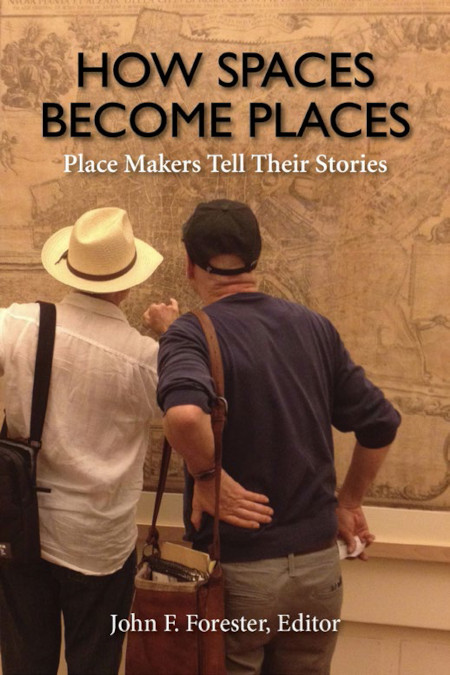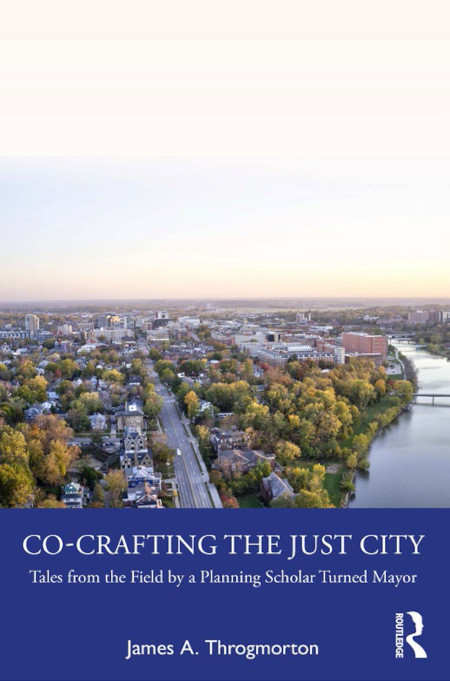

The ascendance of participatory theory and methods in geography and urban planning in recent decades has obliged theorists, researchers, and practitioners in both disciplines to spell out how normative ideals of community participation and engagement can be employed and realized in the day-to-day practice of making places. The challenge of implementing participatory, collaborative, and inclusionary action and research is particularly acute in the current context of political polarization, rampant inequality, virulent demagoguery, and the hegemony of market rationality as the driver of public policy. Two recent books by planners explore this challenge with results that affirm the goals of creating more just, equitable, sustainable, inclusive, and aesthetic places while raising lingering questions regarding the role of power and the political in achieving these goals. The planners’ stories clarify the difficulties facing practitioners when moving from theory to action and suggest that much more work is required to align practice with the aims and intentions of progressive social theorists and political activists. These books address fundamental questions for geographers and planners regarding the nature and meaning of space, place, governance, community, authority, expertise, and more, and provide an important perspective on the uses and misuses of instrumental and strategic politics when acting on normative ideals of inclusion and engagement in an inescapably political world.
In How Spaces Become Places: Place Makers Tell Their Stories, John F. Forester has compiled and edited thirteen first-person accounts by “place makers” that detail their experiences in proposing and carrying out “place-making” projects in settings as diverse as Brooklyn, New York; Detroit, Michigan; Paris, France; Melbourne, Australia; and the tiny village of Taft, Oregon. Forester, a professor of city and regional planning at Cornell University for more than four decades, has dedicated his career to revealing the social dynamics of planning and has written extensively on the experiences of practicing planners seeking to do their jobs and improve places while working “in the face of power” (e.g., Forester Citation1989). His method is to collect, analyze, deconstruct, and explicate “practice stories” in which planners describe and reflect on the assumptions, approaches, methods, and strategies they employ in practicing their craft under conditions rarely of their own choosing.
The practice stories in How Spaces Become Places are assembled in three sections. Four chapters in part I relate the design and development of physical spaces for affordable housing, small-town redevelopment, road redesign for traffic calming, and the replacement of a historic but deteriorating bridge. The four chapters in part II narrate the building of community-serving institutions addressing racialized violence, creating a community justice center, establishing an interfaith forum, and crafting a food security policy for an impoverished city. Part III includes five chapters describing the use of art installations as a form of place-making in previously vacant or underutilized spaces. Place, in these examples, variously refers to a physical space, a social arena, or an aesthetic object, although the place-making implications of these distinctions are not explicitly examined in the narratives. Forester enthusiastically credits these projects for “transform(ing) ordinary, taken-for-granted spaces into places that matter” (p. 1) and, in their different ways, turning “an empty space into an arena for community drama” (p. 6). Landscape architect Randolph Hester asserts in a brief Foreword that the collected stories “explain how creativity transform(s) inert space into meaningful places that enrich our lives” (p. x). In the practice stories detailing these transformations, practitioners relate their visions for the project, how and why they became involved, and the barriers they overcame to achieve their objectives. A leitmotif linking the narratives identifies the obstacles posed by cumbersome bureaucracies, recalcitrant public officials, apathetic residents, and interests favoring outcomes, often market-based, that contradicted those sought by project advocates. Individually and in aggregate, these narratives offer a revealing portrait of the difficulty in moving from vision to practice in the real world and detail the strategies that place-makers employed to produce successful outcomes.
Notwithstanding the book’s celebratory tone, there are limits to the lessons that can be extracted from these practice stories. Forester offers few details on the methods employed in selecting his cases, conducting interviews, and editing the resulting narratives, raising questions regarding representativeness, the possibility of omitted perspectives, and the ability to generalize from the selected stories. The included cases all achieved their objectives, leaving unexamined the lessons that might have been extracted from exemplary failures. The featured place-makers occupy a narrow occupational niche as architects, landscape architects, designers, planners, and practicing artists whose authority and expertise derive from their professional titles or academic credentials rather than from deep-rooted lived experience in the affected communities. Reflecting these perspectives, the included cases promote meliorative and reformist design solutions rather than seeking to improve material livelihoods or advance structural change.
Also concerning are some of the underlying assumptions that propel these stories forward. A sharp distinction between place-makers and others pervades the narratives and establishes a clear hierarchy of vision, intention, authority, and expertise. Implicitly and often explicitly, these “accomplished place makers” (p. 2) assert ownership over their projects. It is their vision, plan, agenda, and objectives that delineate the projects in every case, in a view repeatedly asserted throughout the book: “I introduced the idea to the community” (p. 51); “We had this idea, and we just started off” (p. 53); “I set what I thought could be the goals” (p. 105); “I’ve been a driver in setting it up and establishing its objectives” (p. 143); “I felt this intense need to create something (and) I have a copyright on the event. … I mean, it’s my event, and it’s licensed” (pp. 173, 185); “We dreamed up this model … and we pitched it to them” (p. 201). Forester acknowledges, in his introduction, the interdependence between “place makers” and “place users” (p. 3), but in the ensuing practice stories, this usually resolves into the need to diffuse residents’ opposition and win support for the proponents’ projects. Even when advocates solicit community input, it is often with regard to design details after the basic parameters of the project have been established and are not open to negotiation. In the case of an affordable housing development in Oakland, California, for example, the narrator recounts organizing residents into design teams that “receive a … model of the site and … a kit of parts that includes all of the units that have to go on the site, plus the parking requirements and any open-space uses (and) each of those … teams begins to … work toward some agreement in the design … and they just loved it by the end” (pp. 22–23). Some place-makers were not averse to manipulation to win community support. One narrator reports a preference for holding community meetings in a church “because in that kind of physical setting … people are a bit more well-behaved (and) their concerns can be made to feel … shallow and small” (p. 21). Another recounts making a public presentation “looking as much like a professor as I could” by wearing “these little, round, kind of Le Corbusieran-looking theater glasses … to seem as smart as I could (and) that helped with the presentation” (p. 55). Encountering opposition from “a pretty large, auto-mechanic guy,” the same narrator recruits a neighbor who “was just outrageously beautiful” to “go across the street in a bikini … and she just kinda talked to him,” and he became “an eloquent and passionate” supporter of the project (pp. 58–59). The tongue-in-cheek tone of such disclosures obscures the problem of reconciling means and ends and the unequal power relations within these exchanges remain unremarked, leaving readers to reach their own conclusions.
While the stories collected by Forester detail the difficulties of contending with municipal officials and government bureaucracies, James A. Throgmorton’s Co-Crafting the Just City: Tales from the Field by a Planning Scholar Turned Mayor presents the perspective of one of those local government officials seeking to build progressive change in a local community. After fifteen years as an environmental planner and nearly twenty-five years as professor of city and regional planning at the University of Iowa, Throgmorton left the safety of academia to serve as city councilor and mayor of Iowa City, Iowa (population c. 76,000) from 2012 to 2019. His book offers a detailed, insider’s account of municipal politics viewed through his experiences in applying academic theory to political practice on behalf of his vision of “the just city.” As if directly addressing planners’ frustrations with municipal obstructionism, Throgmorton’s objective is to enlarge planners’ understanding of “what elected officials actually do” (p. 2) so as to improve coordination between them and enhance the practice of social change. In successive chapters, Throgmorton narrates his attempt, during his first two years on the city council, to be a “team player,” only to be frustrated by the power of the downtown growth machine to prioritize economic interests, and his subsequent resolve to “use my position to … help our city make a turn in what I thought was the right direction—that is, toward becoming a more inclusive, just, and sustainable city” (p. 7).
Throgmorton draws from the classic planning literature to inform his approach to city governance. He invokes Jane Jacobs’s description of the city as organized complexity; foregrounds the idea of cocrafting to engage with the multiplicity of human and nonhuman actors; adopts a processual understanding of the city’s continual unfolding; and, building on his own extensive scholarship, extols the value of persuasive storytelling to shape attention and influence outcomes in desired directions (cf. Throgmorton Citation1996). Despite this nod to urban theory, however, the story that unfolds in the course of the book reveals the necessity of resorting to instrumental politics to achieve normative ideals. After being repeatedly outvoted on the council by proponents of private profit through economic growth and frustrated in his attempts to realize the “just city,” Throgmorton recruits several like-minded candidates to run for city council, works assiduously for their election, and is rewarded with a new council majority committed to a progressive agenda prioritizing economic and racial equity. As he recounts, his moment of clarity occurred when “the conflict between what I … valued and what the council majority was doing became increasingly apparent.” He realized he “would have to forsake the managerial mode of governance … which obfuscated the political stakes of our actions (and) I would instead have to think and act in a more explicitly political way” (p. 69).
Reflecting on this experience, Throgmorton is unapologetic about his turn to realpolitik to realize his vision of the just city. This change in strategy, supported by the favorable composition of the council, produced positive results in the form of significant budget (re)allocations and new municipal ordinances addressing racial equity, affordable housing, homelessness reduction, environmental sustainability, and more. Although it no doubt accurately reflects the exigencies of political decision-making, the story of his turnabout describes in detail what he did but offers few practical guidelines for the practice of progressive politics. As the world too often demonstrates, political engagement can be practiced for repressive as well as progressive ends. Ideals of justice, equity, sustainability, and the like are capacious categories that subsume multiple and even incommensurable meanings and actions. What does an engaged politics of the just city look like under these conditions? Whose priorities prevail, on what grounds, and on what basis of legitimation? From where do planners derive authority and expertise to engage in the political process? Where are political skills taught in the education of planners? Although these books propel these questions to the fore, clarifying how to better engage in the practice of strategic progressive politics remains a task for planners and geographers alike.
References
- Forester, J. 1989. Planning in the face of power. Berkeley: University of California Press.
- Throgmorton, J. 1996. Planning as persuasive storytelling: The rhetorical construction of Chicago’s electric future. Chicago, IL: University of Chicago Press.
